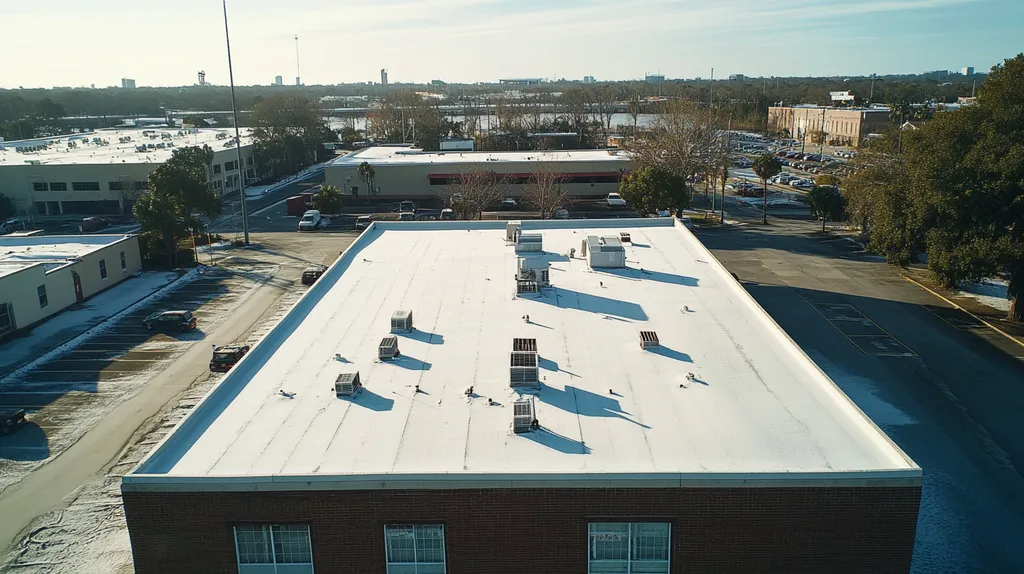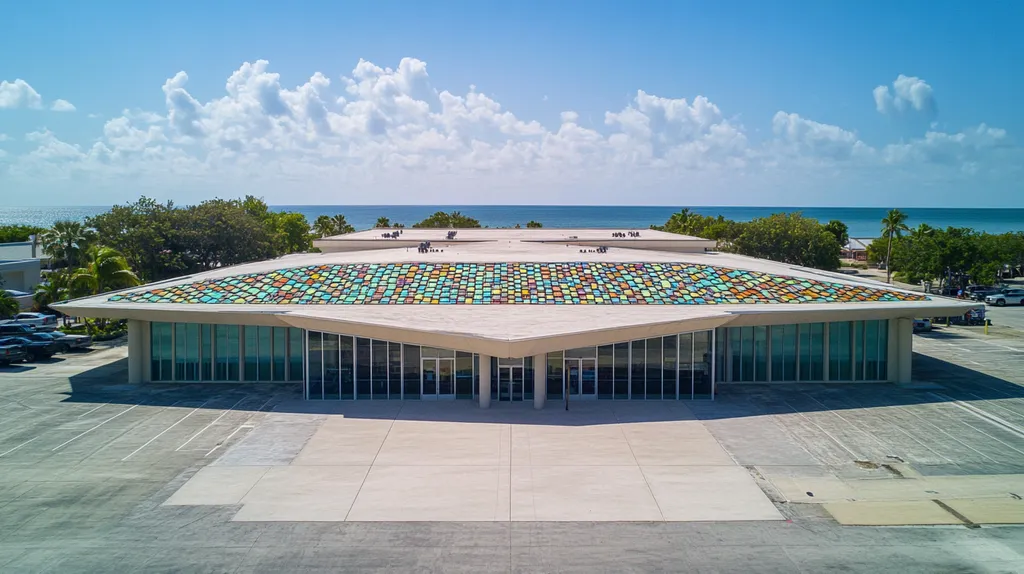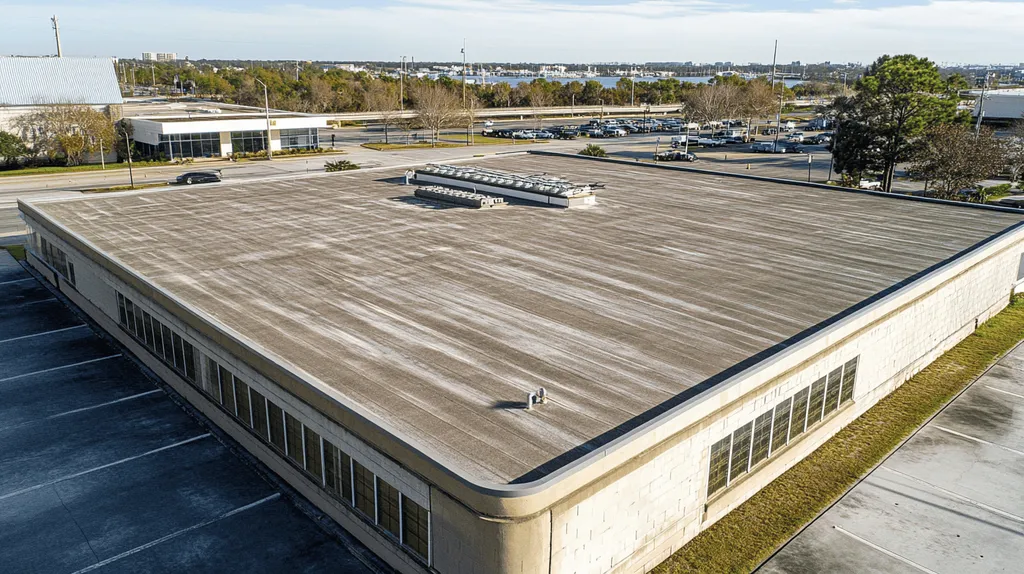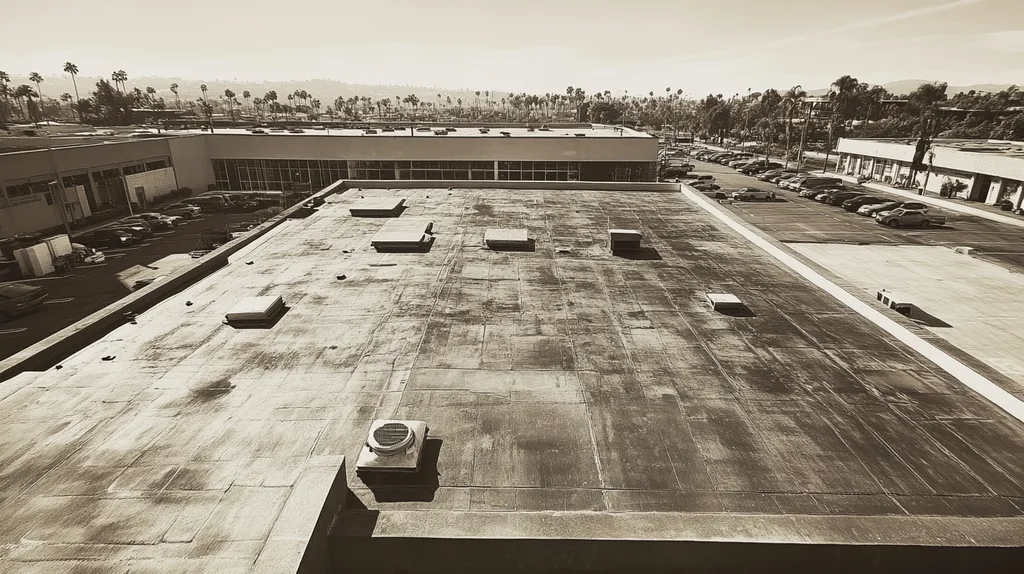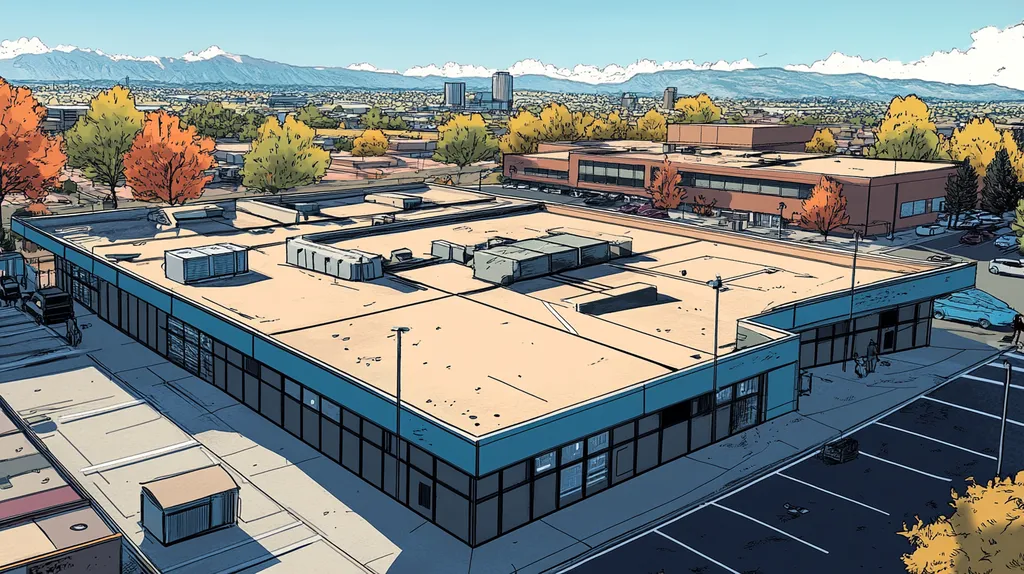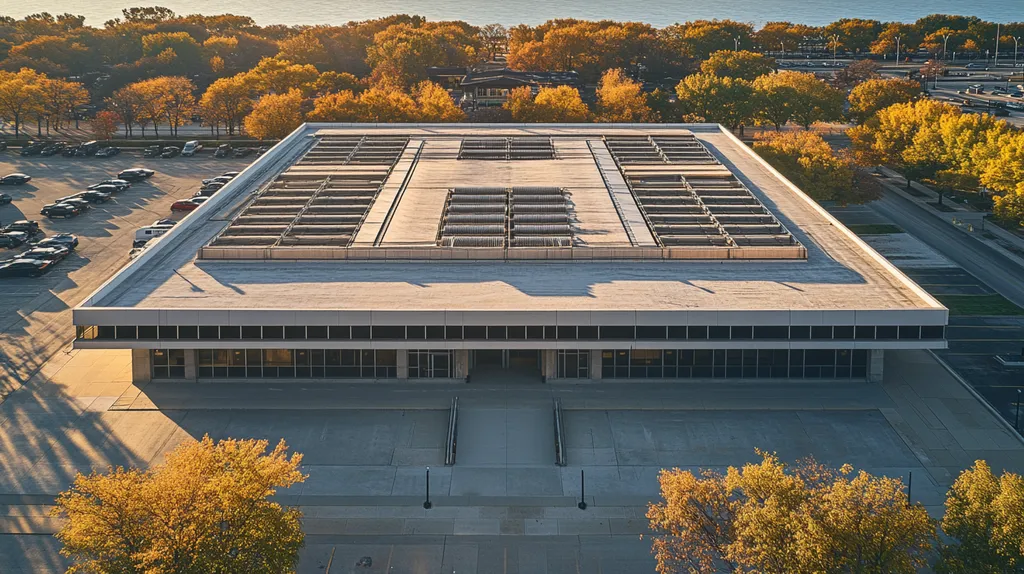Weather-related coating failures cost commercial property owners over $2.3 billion annually in premature replacements and emergency repairs. Recent studies show that 40% of these failures stem directly from mismatched coating selections for local climate conditions.
From extreme temperature fluctuations to increasingly severe storms, modern weather patterns create unique challenges that demand specific coating solutions. Understanding these patterns’ impacts on commercial roof coatings has become crucial for protecting facility investments.
This comprehensive guide examines the critical relationship between weather patterns and coating performance, providing property owners and facility managers with actionable strategies for selection, implementation, and maintenance.
SECTION 1: FUNDAMENTAL CONCEPTS
Weather patterns significantly influence the performance and longevity of commercial roof coatings, with studies showing that weather-related factors contribute to over 40% of premature coating failures. Local climate conditions, from extreme temperature fluctuations to precipitation patterns, create unique challenges that demand specific coating solutions. Understanding these fundamental concepts is crucial for protecting your investment and ensuring optimal roof performance.
Weather Impact on Roof Coatings
Many institutional and commercial facilities apply roof coatings to extend roof life, protect interior operations, and control energy costs. However, these benefits only materialize when weather conditions are properly considered in both application and long-term performance planning. (source: FacilitiesNet)
Temperature fluctuations pose a particular challenge, as extreme heat can accelerate coating degradation while cold temperatures may cause brittleness and cracking. Daily temperature cycles create expansion and contraction that stress coating adhesion.
Precipitation patterns directly affect coating performance through moisture penetration and freeze-thaw cycles. Areas with high rainfall require coatings with superior water resistance and rapid curing properties.
Wind exposure can accelerate wear through debris impact and may drive rain or snow beneath poorly adhered sections. Understanding these weather patterns helps inform both coating selection and application timing.
Base Materials and Compatibility
Different roofing substrates require specific coating formulations to ensure proper adhesion and performance. Metal roofs demand coatings that can handle thermal movement, while single-ply membranes need products that won’t degrade the underlying material.
Surface preparation requirements vary significantly based on the substrate material. Concrete may need acid etching, while metal surfaces often require rust removal and primers.
Chemical compatibility between existing roofing materials and new coatings is critical. Incompatible combinations can lead to coating failure, membrane degradation, or both.
The age and condition of the base material also influence coating selection. Older substrates may require more aggressive surface preparation or specialized primers to achieve proper adhesion.
UV and Thermal Stress Fundamentals
Ultraviolet radiation causes chemical breakdown in coating materials, leading to chalking, cracking, and loss of protective properties. High-quality UV-resistant coatings incorporate specialized pigments and stabilizers to combat these effects.
Thermal stress from daily temperature cycles creates microscopic movements in the roof structure. Coatings must maintain flexibility to accommodate this movement without cracking or separating from the substrate.
Heat absorption and reflection properties significantly impact both coating longevity and building energy efficiency. Light-colored, reflective coatings reduce thermal stress while dark coatings absorb more heat.
The combination of UV exposure and thermal cycling accelerates coating degradation. Understanding these interactions helps in selecting coatings that provide optimal protection under local conditions.
SECTION 2: SYSTEM COMPONENTS
The integrity of commercial roofing systems faces unprecedented challenges from increasingly extreme weather patterns. Recent studies show that properly selected and installed system components can extend roof life by 15-20 years, while poor choices can lead to premature failure within 2-3 years. Each component must work in harmony to create a resilient barrier against the elements, from the base layer to the final coating.
Coating Types for Weather Resistance
Choosing a roof coating best suited to a facility’s local climate can determine whether the application succeeds or fails in delivering energy savings and prolonging roof life. Different coating formulations offer varying levels of protection against specific weather challenges. (source: FacilitiesNet)
Silicone coatings excel in areas with high rainfall, offering superior ponding water resistance and UV protection. These coatings maintain their flexibility even after years of sun exposure, making them ideal for warm climates.
Acrylic coatings provide excellent reflectivity and UV resistance at a lower cost point. However, they require specific temperature and humidity conditions during application to achieve optimal adhesion and curing.
Polyurethane coatings offer superior impact resistance and durability, making them suitable for areas with frequent hail or high foot traffic. They also provide excellent chemical resistance for industrial environments.
Underlayment and Membrane Selection
The underlayment serves as a critical secondary water barrier and must be selected based on regional precipitation patterns. Self-adhering modified bitumen underlayments provide superior protection in areas prone to ice damming and wind-driven rain.
TPO membranes have become increasingly popular due to their excellent heat reflection properties and resistance to chemical exposure. These membranes can withstand extreme temperature fluctuations without becoming brittle or cracking.
EPDM membranes offer exceptional durability in cold climates and resist damage from UV exposure. Their flexibility allows them to accommodate building movement without compromising waterproof integrity.
Proper membrane thickness selection depends on anticipated exposure conditions. High-traffic areas or regions with severe weather require thicker membranes for enhanced puncture resistance.
Fastening and Adhesion Systems
Wind uplift resistance begins with proper fastening system selection and installation. Enhanced fastening patterns are critical in high-wind zones, often requiring up to 50% more fasteners than standard installations.
Adhesive systems must be compatible with both the membrane and substrate materials. Temperature and humidity during installation significantly impact adhesive performance and long-term bond strength.
Mechanical fastening systems provide positive attachment but require careful consideration of thermal movement. Proper plate selection and installation prevent membrane tears and maintain system integrity.
Hybrid systems combining both adhesives and mechanical fasteners offer superior performance in severe weather zones. These systems provide redundant security against wind uplift while maintaining flexibility.
SECTION 3: IMPLEMENTATION METHODS
Successful coating implementation can extend a commercial roof’s lifespan by 10-15 years, while poor application methods often lead to failure within the first 24 months. Recent industry data shows that over 65% of premature coating failures stem from inadequate implementation rather than product defects. Understanding and executing proper installation methods is crucial for protecting your facility investment and ensuring long-term performance.
Surface Preparation and Cleaning
Thorough surface preparation directly correlates with coating longevity. Professional inspection must identify and document all existing damage, deterioration, and potential problem areas before any work begins.
Power washing alone removes only surface contaminants. Deep cleaning with appropriate chemical cleaners ensures removal of embedded dirt, oils, and biological growth that can compromise coating adhesion.
All repairs must be completed and fully cured before coating application. This includes sealing gaps, replacing damaged materials, and addressing underlying moisture issues.
Proper surface profiling creates optimal conditions for coating adhesion. This may involve mechanical abrasion, chemical etching, or priming depending on the substrate material and chosen coating system.
Coating Application Techniques
Application thickness control is critical for coating performance. Too thin leaves the substrate vulnerable, while too thick wastes material and may lead to curing problems.
Different coating types require specific application methods. Spray systems offer rapid coverage for large areas but demand careful overspray control, while roller applications provide better thickness consistency on detailed work.
Multiple thin coats generally perform better than single thick applications. This approach allows proper curing between layers and reduces the risk of trapped solvents or moisture.
Coating materials must be properly mixed and maintained at the correct temperature during application. Variations in material consistency can lead to uneven coverage and premature failure.
Wind and Weather Conditions Considerations
Consider installing reflective coatings that can reduce heat absorption and minimize UV damage. These materials can lower surface temperatures by 50-60°F while extending coating lifespan through reduced thermal stress. (source: Cole Roofing)
Application temperature significantly impacts coating cure rates and final properties. Most systems require substrate temperatures between 50-90°F for optimal results.
Wind speeds above 10-15 mph can cause overspray issues and introduce airborne contamination. Schedule work during calmer periods, typically early morning or evening.
Monitor relative humidity and dew point throughout application. High humidity extends cure times, while condensation can cause adhesion failures and coating defects.
SECTION 4: MAINTENANCE REQUIREMENTS
Weather-related coating failures cost commercial property owners millions annually in premature replacements and repairs. Studies show that implementing comprehensive maintenance programs can extend coating lifespans by 40-50% while reducing long-term operating costs by up to 35%. Understanding and executing proper maintenance protocols is essential for protecting your roofing investment against increasingly volatile weather patterns.
Regular Inspection Protocols
Weather patterns significantly influence the performance and longevity of roof coatings. Choosing inspection timing and protocols suited to your facility’s local climate can determine whether coatings deliver their promised benefits or fail prematurely. (source: FacilitiesNet)
Schedule comprehensive inspections at least twice annually, with additional checks after severe weather events. Focus on areas prone to weathering like seams, flashings, and drainage points where coating stress is highest.
Document all findings through detailed photos and reports, establishing a baseline for tracking degradation rates. This data proves invaluable for warranty claims and planning preventive maintenance.
Use infrared scanning and moisture testing to detect subsurface issues before they manifest as visible damage. Early detection of moisture infiltration prevents coating delamination and substrate deterioration.
Repairs and Patching Techniques
Address coating damage immediately using repair methods appropriate for the specific coating type and weather conditions. Small cracks or blisters can quickly expand into major failures if left untreated.
Clean and prepare damaged areas thoroughly before applying repair materials. Proper surface preparation is critical for patch adhesion and long-term performance.
Apply repairs during optimal weather windows to ensure proper curing. Temperature and humidity significantly impact repair material performance.
Document all repairs with photos and detailed notes about methods and materials used. This documentation supports warranty compliance and helps track problem areas.
Preventive Measures for Water Damage
Maintain clean, functional drainage systems to prevent water pooling that can degrade coatings. Regular gutter and drain cleaning should align with local foliage patterns.
Install additional drainage where needed to address areas prone to ponding. Even highly water-resistant coatings can fail under prolonged ponding conditions.
Monitor coating reflectivity and recoat areas showing significant degradation before water infiltration occurs. UV damage often precedes water penetration issues.
Trim overhanging branches and remove debris regularly to prevent mechanical damage and organic buildup that can trap moisture against the coating surface.
SECTION 5: PERFORMANCE METRICS
Performance metrics serve as critical indicators for evaluating roof coating effectiveness against weather-related challenges. Industry data shows that 35% of commercial roof coatings fail prematurely due to inadequate performance monitoring and assessment. Understanding and tracking these metrics enables property owners to make data-driven decisions about coating selection, maintenance intervals, and replacement timing.
Assessing Coating Durability
The environmental conditions during coating application directly impact long-term performance and durability. Higher humidity levels can significantly affect drying times and increase the risk of moisture entrapment, while temperature variations influence proper adhesion and coating effectiveness. (source: Armour Roof Co)
Core durability metrics include tensile strength, elongation percentage, and tear resistance. These measurements help predict how coatings will perform under various stress conditions and weather exposures.
Adhesion testing through pull-off strength measurements provides concrete data about coating bond strength. Regular testing helps identify potential delamination issues before they become visible failures.
Impact resistance testing simulates hail and debris exposure, particularly important in regions prone to severe weather events. This data helps facility managers anticipate and plan for potential damage scenarios.
Measuring Energy Efficiency Gains
Solar reflectance and thermal emittance measurements provide quantifiable data about coating energy performance. These metrics directly correlate to potential cooling cost reductions and ROI calculations.
Surface temperature monitoring through infrared scanning helps verify coating effectiveness. Regular comparative measurements can track degradation in reflective properties over time.
Energy consumption tracking before and after coating application establishes clear performance benchmarks. This data helps justify coating investments through documented cost savings.
Heat flux measurements through the roof assembly demonstrate actual thermal resistance improvements. These readings validate manufacturer claims about energy efficiency benefits.
Evaluating Weather Resistance
Weathering resistance metrics focus on coating performance under specific environmental stresses. Key indicators include UV stability, moisture penetration rates, and thermal cycling endurance.
Water absorption and vapor transmission rates reveal how effectively coatings manage moisture. These measurements help predict potential problems in high-humidity environments.
Accelerated weathering tests simulate long-term exposure effects in compressed timeframes. Results help forecast maintenance needs and recoating intervals.
Chemical resistance testing ensures coatings can withstand environmental pollutants and acid rain. This data is particularly valuable for facilities in industrial areas or coastal regions.
SECTION 6: OPTIMIZATION STRATEGIES
Weather patterns increasingly challenge commercial roof coating performance, with recent data showing that extreme conditions can reduce coating effectiveness by up to 40% within the first three years. Optimization strategies have become essential as property owners face more frequent severe weather events and rising maintenance costs. Strategic improvements in coating applications, drainage systems, and climate adaptations can dramatically extend roof life while reducing long-term operating expenses.
Enhancing Coating Lifespan
Choosing a roof coating best suited to a facility’s local climate can determine whether the application succeeds or fails in delivering energy savings and prolonging roof life. Different coating formulations offer varying levels of protection against specific weather challenges. (source: FacilitiesNet)
Strategic coating selection must account for seasonal temperature extremes, UV exposure levels, and typical precipitation patterns. High-performance coatings engineered for specific climate challenges can extend service life by 40-50% compared to standard formulations.
Application timing plays a crucial role in coating performance. Installing coatings during optimal temperature and humidity conditions ensures proper curing and adhesion.
Regular maintenance intervals should align with local weather patterns, with additional inspections scheduled after severe weather events. This proactive approach helps identify and address potential issues before they compromise coating integrity.
Improving Drainage Systems
Proper drainage design prevents water accumulation that can degrade coating performance. Slope calculations must account for local rainfall intensity and frequency to ensure adequate water removal.
Strategic placement of drains and scuppers reduces ponding risk while minimizing stress on coating systems. Additional drainage points may be necessary in areas experiencing increased precipitation due to climate change.
Regular cleaning and maintenance of drainage components prevents debris accumulation that can trap moisture against coated surfaces. Establishing clear maintenance schedules based on local foliage patterns reduces blockage risks.
Integration of secondary drainage systems provides backup protection during heavy rainfall events. This redundancy helps prevent coating damage from overflow conditions.
Adapting to Climate Change Impacts
Rising average temperatures and more frequent extreme weather events require enhanced coating specifications. Heat-reflective formulations can reduce surface temperatures by up to 50°F while extending coating lifespan.
Wind uplift resistance becomes increasingly important as storm intensity increases. Enhanced attachment methods and proper coating thickness help prevent wind-related failures.
Moisture management strategies must evolve to handle changing precipitation patterns. Advanced coating systems with superior water resistance properties protect against both sudden downpours and extended wet periods.
Regular evaluation of climate trend data helps inform coating selection and maintenance scheduling. This data-driven approach ensures protection remains adequate as weather patterns continue to shift.
Looking Ahead
With weather-related coating failures costing the commercial roofing industry over $2.3 billion annually, the stakes for proper coating selection and maintenance have never been higher.
Climate change projections indicate that extreme weather events will continue to intensify, making weather-resistant coating systems increasingly critical for facility protection.
The future of commercial roof performance depends on implementing comprehensive coating strategies that address local weather patterns while incorporating climate adaptation measures.
By following proven protocols for selection, application, and maintenance, facility managers can extend coating life by 40-50% while reducing long-term costs by up to 35%.
The time to act is now – waiting to upgrade coating systems will only lead to higher costs and increased vulnerability to weather-related damage.
FREQUENTLY ASKED QUESTIONS
Q. How do weather patterns affect commercial roof coatings?
A. Weather patterns, such as temperature fluctuations and precipitation, greatly impact coating performance and lifespan. Extreme heat can degrade coatings quickly, while moisture can lead to adhesion failures and structural damage if not properly addressed.
Q. What types of coatings are best for an industrial roof?
A. Selecting the right coating depends on local climate. Silicone coatings excel in high-rainfall areas, while polyurethane offers excellent impact resistance. Acrylic coatings balance affordability with effective UV protection and reflectivity.
Q. What is essential for successful commercial roof coating applications?
A. Proper surface preparation is crucial, along with choosing optimal weather conditions for application. Ensuring the substrate is clean, dry, and primed establishes a solid foundation for a long-lasting coating.
Q. How can I maintain my commercial roof coating?
A. Regular inspections and maintenance are key. Schedule checks for wear and tear, clean drainage systems, and promptly address any damage to prevent costly repairs and prolong the coating’s lifespan.
Q. What performance metrics should I track for my roof coating?
A. Important metrics include adhesion strength, UV resistance, and moisture control. Regularly assessing these indicators can help you understand how well your coating withstands weather challenges and when maintenance is needed.
Q. How can I optimize my commercial roof coating system?
A. Optimize by selecting coatings suitable for your climate, improving drainage systems, and scheduling maintenance based on local weather patterns. Strategic choices can significantly enhance coating performance and longevity.
Q. What are common signs of coating failure on a commercial roof?
A. Look for signs such as peeling, cracking, or discoloration. Additionally, pooling water and significant leaks can indicate underlying issues needing to be addressed to prevent further damage.

